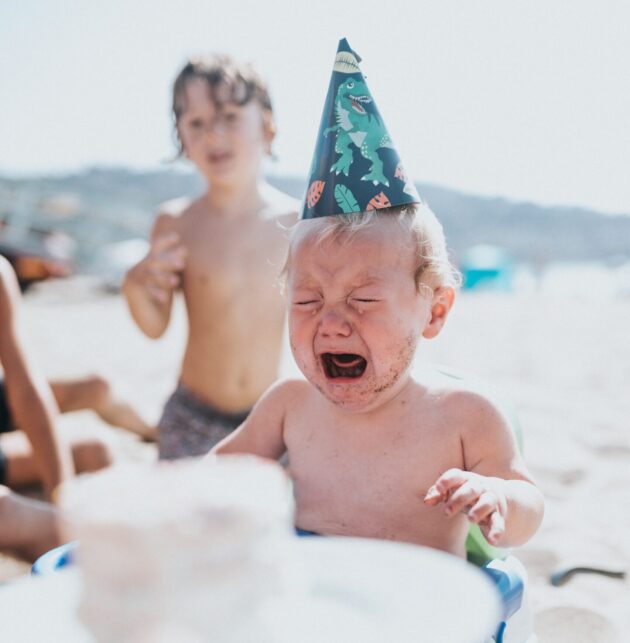Newborn babies are fascinating beings, born with a set of natural reflexes that help them adapt to the world. Among these is the swimming reflex, a natural ability that allows infants to make swimming motions when placed in water. This instinct, along with the diving reflex, is a remnant of their time in the womb, surrounded by amniotic fluid. While it may seem as though young babies are natural swimmers, this ability doesn’t last forever. Understanding when and why newborn babies lose their swimming instinct is key to ensuring water safety and building water confidence in children.
The Swimming Reflex and Diving Reflex in Newborns
Healthy infants are born with a pair of reflexes that make it appear as though they can swim:
Swimming Reflex
When a newborn baby is placed tummy-side down in water, they instinctively move their arms and legs in a swimming motion. This reflex is automatic and does not require conscious thought or voluntary movements. It’s a survival mechanism, thought to stem from our evolutionary past.
Diving Reflex
Also known as the laryngeal reflex, this is triggered when a baby’s face is submerged in water. The reflex causes the throat to close off the airway, creating a watertight seal and preventing the baby from inhaling water. At the same time, the heart rate slows down to conserve oxygen, and blood is redirected to vital organs.
Both reflexes are remarkable examples of the body’s natural instincts, ensuring that newborn swimming is a relatively safe activity under controlled conditions. However, these abilities are temporary and diminish as babies grow older and their nervous system develops.
When Do Babies Lose These Reflexes?
Babies typically begin to lose their swimming reflex and diving reflex within the first four to six months of life. By this time, their natural reflexes are replaced by more controlled, voluntary movements.
The swimming reflex fades as the moro reflex (or startle reflex) and tonic neck reflexes diminish, allowing babies to gain greater freedom of movement.
The diving reflex, while still present at a young age, becomes less pronounced after the first six months of life. As the reflex wanes, infants lose their natural ability to hold their breath underwater automatically.
The exact timing varies from baby to baby, as each child develops at a different rate. However, by around six months of age, most babies will no longer instinctively perform swimming motions or exhibit a strong gag reflex when submerged.
Why Does the Swimming Instinct Fade?
As babies grow, their nervous system matures, and natural reflexes are replaced by learned behaviours. This shift allows young children to develop more precise and deliberate motor skills, which are necessary for crawling, walking, and eventually swimming through swim lessons. While newborns have a natural ability to respond to water, they must later learn specific techniques to navigate it safely.
Additionally, the rooting reflex (which helps babies locate the breast for feeding) and the moro reflex diminish over time, as these are also survival mechanisms that are no longer needed once the baby gains more control over their body temperatures, movements, and sensory responses.
Introducing Babies to Water at a Young Age
Although the swimming reflex fades early, exposing babies to water at a young age is still a good way to build water confidence and prepare them for swim lessons as they grow. Many parents and health professionals advocate for baby swimming classes, which can be a great way to introduce young children to the water in a controlled and safe environment.
Tips for Baby Swimming
Start Early
Newborn babies can safely enjoy water play in small, warm environments such as inflatable pools or shallow bathtubs. Introducing water at an early age can help prevent fear later in life.
Use Proper Equipment
For babies participating in newborn swimming or water activities, tools like ear plugs, water wings, and appropriate swimsuits for sensitive skin can make the experience safer and more comfortable.
Keep Sessions Short
Babies have small bodies and lose heat quickly in cold water. Limit swimming sessions to 10–15 minutes maximum, and always dry your baby with a warm towel or warm blanket afterward to stabilise their body temperatures.
Focus on Safety
Always practice touch supervision, keeping your baby within arm’s reach. Whether you’re in a swimming pool or a large public pool, ensure you perform a thorough safety check and watch for signs of discomfort or fatigue.
Mind the Water Temperature
Babies are more comfortable in water that’s close to their body temperature. Lukewarm water is ideal, as cold water can quickly cause discomfort or even hypothermia in young babies.
The Importance of Swim Lessons for Young Children
Once the natural reflexes fade, formal swim lessons become a vital step in teaching young children how to swim safely. Lessons allow children to develop skills like breath control, floating, and using the opposite arm and leg movements for swimming. These lessons also instill a sense of water safety, which is crucial in preventing the risk of drowning.
Parents should work with certified instructors who have specific goals for each lesson and who prioritise safety. While lessons are lots of fun, they should always be conducted in warm, clean water to avoid discomfort from chlorinated water or exposure to cold water.
What About Babies’ First Time in a Pool?
A baby’s first time in a swimming pool is a special milestone. Make sure to prepare in advance by checking the water temperature, ensuring it’s not too cold, and verifying that the pool water is clean and safe for baby’s sensitive skin.
For their next dive, encourage gentle exposure rather than submerging their face or head immediately. Using cue words like “ready, set, go” can help signal what’s coming, fostering water confidence over time. Always hold your baby securely, ensuring their head and soft tissue around the neck are supported.
Building Confidence in the Water
While babies lose their swimming instinct after a few months of life, fostering a positive relationship with water at a young age is invaluable. Parents can encourage this by making water activities lots of fun, providing age-appropriate swim lessons, and gradually exposing their child to the sides of the pool, large public pools, and eventually deeper waters like the deep end.
Remember, the goal is to develop water confidence, not to rush milestones. Take things slow, respect your child’s pace, and always prioritise safety. With the right approach, you can help your child grow from a reflexive natural swimmer to a confident and skilled one, ready to enjoy a lifetime of safe, happy swimming experiences.
Further Links and Resources
https://www.rlss.org.uk/blog/the-importance-of-baby-and-toddler-swimming
More Posts from Enjoy Every Minute You Might Find Useful
https://enjoyeveryminute.co.uk/2024/09/04/how-many-words-should-an-18-month-old-say/
https://enjoyeveryminute.co.uk/2024/04/23/pushchair-bassinet-overnight/
https://enjoyeveryminute.co.uk/2024/06/17/when-should-i-start-playing-peekaboo-with-my-baby/


